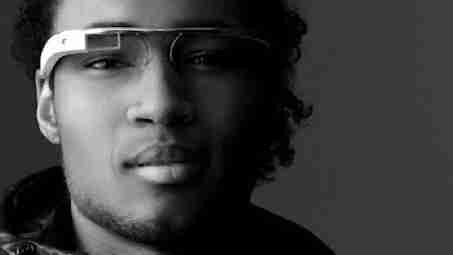Late last month in a California court, Samsung was ordered to pay Apple over $1 billion as part of a patent lawsuit in which an American jury concluded the Korean company copied the American company, news which Apple CEO Tim Cook was quite pleased about. Given Apple co-founder Steve Jobs’ comments on Android before his passing, he probably would have been delighted too. His counterpart, who is still alive, isn’t.

In fact, Apple co-founder Steve Wozniak hates the result, doesn’t agree with it, and thinks it will be overruled. Samsung will of course appeal, and this case will go back and forth for months still, but Wozniak just wishes everyone could get along.
“I hate it,” Wozniak told Bloomberg in Shanghai today, referring to the patent battle. “I don’t think the decision of California will hold. And I don’t agree with it — very small things I don’t really call that innovative. I wish everybody would just agree to exchange all the patents and everybody can build the best forms they want to use everybody’s technologies.”
The famous engineer also had some comments about the just-announced iPhone 5 , although he hasn’t bought one yet and is waiting till he plays with it before giving his opinion and before he compares it to the competition. Wozniak does have one hope though: that the new iPhone 5 will take better photos than its Android counterparts: “A better quality on the pictures will mean a lot, because when I show people pictures on my iPhone 4 and my Galaxy S III, they always say the Galaxy S III, or even the Motorola Razr, pictures look better.”
Even if it does, I’m sure the Galaxy S IV will top it, and the cycle will continue.
See also: Watch Apple’s full iPhone 5 keynote presentation now, even if you don’t have QuickTime and Here’s everything you need to know about Apple’s iPhone 5 event
Image credit: stock.xchng
5 ways that Google’s AR glasses could change our world
The news yesterday that yes, Google really is working on augmented reality glasses , was undeniably impressive and as a quick-off-the-mark video that we shared earlier shows, there are plenty of potential downsides to the concept too. However, for better or for worse, Project Glass is setting us off on a road to an even more intimate relationship with the Internet.

Sure, version 1.0 of these glasses is likely to be buggy, expensive, and a little underwhelming (just like any new technology), but looking forward around five years to when they’re finely honed and inexpensive (unless you pay a premium for any ‘Apple iGlasses’ that may appear, maybe), or a bit further forward to AR-enhanced contact lenses , how might our world change?
In the short term, anyone wearing a pair of Google glasses is going to be plainly obvious, as they hardly look like your average prescription specs. In the future though, it may not be quite so obvious who’s wearing ‘smart’ glasses and who isn’t. Will our behaviour change? It will only take one video of a supermarket cashier being needlessly rude to a customer going viral before shops may start putting up signs asking people to remove their glasses at the counter.
How about our behavior in the street? Many of us in countries like the UK are watched almost continually in urban areas by security cameras, but the limited audience able to view and access those video feeds means that we still act as if our actions aren’t being recorded – we’re comfortable to act naturally in the street.
That could change very quickly if everyone has the potential to capture our every moment without us knowing. Out on a Saturday night acting drunk and a bit foolish? Or maybe stone cold sober on a Monday afternoon and accidentally (and embarrassingly) trip over in spectacular style? Someone’s AR glasses could record the moment, use facial recognition to identify you and publicly shame you by sharing it online, tagged to your Twitter account so that the whole world could laugh at your misfortune and know exactly who you were.
The humorous video I linked to at the top of this piece made a serious point about the police potentially wanting to access information recorded by your AR glasses. There’s no doubt that it would be a significant new source of evidence, from perpetrators, victims and witnesses of crime. Will this make certain types of crime less common? And will the police have special versions of these glasses that show even more information about us?
In tense situations like public protests, police wanting to assert their authority could scan a crowd to pick out those with criminal records to keep a special eye on, and may be more likely to arrest them based on the background information they pull up from their glasses. Suddenly, trying to forget that minor criminal charge you received ten years ago and have otherwise moved on from could be a lot harder.
Oh, and facial recognition won’t be perfect – what if you’re falsely identified as a pedophile by someone with a violent disposition?
‘With a smartphone, everyone’s a journalist’, or so some say. As it stands, you have the potential to capture and share newsworthy moments that you encounter in real-time, either as text, audio, photos or video. The problem is that you have to pull your phone out of your pocket, load up the right app, frame a photo or video and capture it. The moment may have passed by then – I know I’ve missed plenty of great photo and video opportunities simply because I couldn’t get set up in time.
With AR glasses, suddenly capturing any moment is a voice command or button press away, recorded in a simple, unobtrusive way.
It can already be difficult to completely disconnect from the Internet – especially when your mobile phone beeps with new emails, Twitter alerts and more around the clock. Project all of this information onto your field of vision, and suddenly – as useful as it may be – it will be easy to feel overwhelmed by it all. Emails, video call requests as you’re walking down the street, ads… Sure, you can take the glasses off, but when they’re so useful for keeping in touch with the world, will you want to?
It’s easy to imagine that the term ‘information overload’ will be taken to new heights (and depths) when every alert and online social interaction is flashed in front of your eyeballs in real-time. Oh, and you’ll bump into things through being distracted. A lot.
I realise the points above make me sound like some technology-hating Luddite – I’m not, I really want to try these glasses and will probably end up wearing them when I can afford them. There are some great opportunities for new forms of self-expression.
You know when you look at something – perhaps a landscape – in real-life and it’s beautiful, but you can never get a photo to capture the same view as your eyes see? The camera in Google’s glasses won’t be as good as your eyes or course, but it will at least be able to frame an image in exactly the same way as you see it, making quick shots of the world around us easier than ever to take and share.
Ever seen the TV sitcom Peep Show ? Imagine a new form of video blogging that takes a true first person perspective, with audio commentary, and uploaded right after recording from wherever you are. Sure, you can do that with a smartphone, but it’s not exactly convenient to hold your phone up as you walk around. From a true first-person perspective, it could be a fresh take on sharing the world around us.
So, come on Google, give me a pair of these glasses and let’s see how much they can really change the world.
Review: The Samsung Galaxy Note II is a promising, if not perfect, mix of tablet and phone
If the suite of phones that have been unleashed on the world on the past year is any indication, Samsung has come out swinging in 2012. Boosted by successful sales of many models, including the popular Galaxy S III and Google-advised Galaxy Nexus, the Korean telecommunications company has made a leap ahead of the pack and become the biggest player in the smartphone sphere. And, with its newest phone hitting the market, it’s easy to see why.

The Galaxy Note II is as perplexing as it is thoughtful, an amalgamation of everything Samsung does well jammed into a 6-inch mega-phone (or mini-tablet) that has a surprising amount of weight to its presence. This so-called “phablet,” a successor to the critically mixed yet commercially successful Galaxy Note, is definitely more aggressive than its forebear and offers more delights than its size would indicate.
But first, the size. One of the standout quotes from a salesperson at the Galaxy Note II event held on October 24 is that the phone is “not for everyone” — and it’s absolutely not for people with small hands. Six inches is a tricky length for a phone simply because it almost always requires two hands to operate; and while the software attempts to ameliorate this issue with a “one-handed” setting that can be activated, it never feels fully natural to hold.
While the size itself is great for commuting, with the 5-inch 1280 by 720 super-AMOLED screen providing a bright and captivating display for everything from a Youtube video to a good round of Jetpack Joyride, plucking it out of a pocket or bag (especially mid-motion) feels like an unstable process.
Holding it in landscape one-handed is nearly impossible without hand cramps and a constant worry of dropping, leaving much to be desired in the way of accessibility. In short, the phone never stops feeling big, which makes it a hard sell on its phone features at face value.
Luckily, there’s more to the product than its hardware, and Jellybean, the newest Android operating system. is a real treat. Seamless, quick and responsive, with smartly integrated haptic technology and colors so beautiful it could make an onion cry, it’s hard not to fall in love with the software that comes standard with the Note II.
The quick and painless adjustment period is likely to ease the mind of those concerned with the Android “learning curve,” and it’s chock full of preloaded apps (such as Flipboard) that knock the socks off of the traditional smartphone experience by taking advantage of the Note II’s screen. Of course, the main draw of Jelly Bean is integrated Google services, which feel like a coup de gras in the way of Apple’s fumbles in iOS 6.
For one, Google Maps on the Note II is far and away the most satisfying maps experience ever — a concerted effort that supercharges everything people love about maps (frankly, that they function correctly) with extra features such as a smart memory that keeps track of all searches you’ve made — including searches on your computer — and full breakdowns of transport schedules. Interacting with the Note II is a breeze, and Jelly Bean brings a lot to the table in facilitating it.
But not all software features are hits. One particular niggling gripe is the inclusion of premium and carrier-based services, such as AT&T Navigator and Music Hub, on the phone — a strategy that largely places bloatware at the forefront of menu screens and means that some stringent cleaning should be done before the phone can be enjoyable.
Second, there still seems to be a dearth of apps that take full advantage of the “S pen,” the stylus that comes standard with the phone. While the Note’s signature app, S Note, intends to capitalize on the stylus’s full use, the incorporation of the tool often feels forced and rarely looks complete. And, while there’s been a great leap in handwriting-to-text conversion (for those who are keen to write their notes), but it still feels slow enough to not be a go-to feature for note-taking.
Of course, none of these apps can run without a battery, and that is another feature that leaves something to be desired. Although the battery itself is massive, it is all-too-quick to run dry and takes forever to recharge. More often than not, if you are inclined to use the phone often for video, apps and note taking, you’ll have to settle for a midday charge and prepare to still have a dead phone by the end of the day. Even when sitting plugged-in while active, the battery can never quite make it back to a full charge — the power draw is just too high to keep the phone on. It’s not a stretch to believe that this is due to the juice that the screen takes to run, but even tapping into the phone’s “Power Saving” mode feels like too little, too late.
When it comes to overall performance, it’s really difficult not to compare this model to the iPad mini. While both are seemingly at opposite ends of the spectrum, with one being an outsized phone and the other a shrunken tablet, they both pack enough goodies to keep consumers looking for a mid-market (re: low-priced) entry into the tablet market.
While the Note II has cornered cost (at $299, it’s still $30 less than the iPad mini) and usage (for making calls), it’s really difficult to see the Note II as a true multi-use product that satisfies both the tablet and the phone well enough.
However, the Galaxy Note II is a sign that Samsung is pulling ahead and taking advantage of the sophistication and style of the latest Android builds — something that not only makes them ta top competitor among similarly outfitted smartphone contemporaries, but hints at a bigger effort to swipe Apple’s profits. All said and done, the future is looking bright for Samsung.
Image Credit: ODD ANDERSEN /Getty Images
